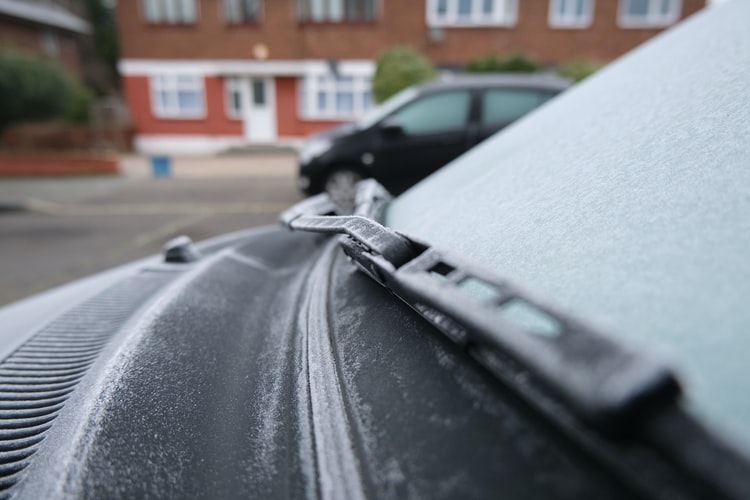Electric vehicles or EVs have become a trend in the current automotive industry. Unlike standard vehicles, EVs do not require regular oil changes or new spark plugs after a certain time. In addition, changing or replacing the brakes of an electric car is rare, thanks to its regenerative braking technology and the ability of the electric motor to stop instantly. Here’s how regenerative brakes work.
Electric cars are a work of top-notch modern science that require considerably low maintenance charges compared to a conventional car. Even though EVs are still in the early stages of being the norm for most people, they certainly show a promising future for the automotive industry.
Moreover, to improve electric vehicles and their on-road efficiency, lots of research and development is being put into them. Therefore, it’s expected that they will dominate the market in the future while also being environment-friendly.
While the maintenance of an electric car is easier and less expensive than most gas-powered cars, electric car drivers should never ignore a routine check-up. This is because electric vehicles have specific maintenance requirements, some of which are similar to conventional vehicles, and if those requirements are not fulfilled, you can expect a costly repair.
Tips for Maintaining Electric Vehicles
1. EVs Require Low Maintenance
Compared to cars with combustion engines, the powertrains of electric vehicles are easy to manage since they have fewer parts. Moreover, the parts are a lot smaller and lighter, and most EV motors can easily be transported by a single person to work on the ev software.
In addition, most electric cars do not rely on a complex multi-speed gearbox. Instead, many of them usually feature a fixed-ratio direct-drive system. An electric vehicle also doesn’t have an exhaust, fuel injector, catalytic converter, muffler, etc., like a conventional car with an engine.
2. Coolant System Maintenance
The majority of EVs have unique thermal management or cooling systems that help lower temperature and reduce the strain on the battery. For example, Chevrolet Bolt uses a rechargeable energy storage coolant system consisting of a series of cooling plates located under the electric vehicle’s battery pack.
The technology guarantees that the battery in the electric car will run at the optimal temperature, enhancing the rechargeability and overall lifetime. You should include maintenance of it as a part of your routine to ensure the coolant’s health and take care of the antifreeze flushes if needed.
You should always go through the car’s instructions manual to know about the maintenance plan of the coolant system and the type of coolant you should use for your electric car.
3. Change the Brake Fluid
Two essential fluids help an electric car to run smoothly: coolant and brake fluid. Although an EV’s brake will last a long time, you should still check the brake fluid regularly, especially when you notice a warning signal flash on your driver information cluster.
You should get your braking system examined at an authorized EV repair shop regularly to ensure that and keep track of anything else going on with the vehicle. Otherwise, you can also schedule a brake inspection and fluid flush every 3 to 5 years.
It’s best to check with the manufacturer’s guidelines to know the recommended type of brake fluids and watch out for leaks. Filling the electric car brake fluid helps in reducing the chances of premature braking system failure that can cost thousands of dollars to repair.
4. Avoid Fast Charging
Yes, fast charging is very convenient when you want to charge your electric car quickly, but it shouldn’t be used frequently. You should only use it in critical situations when necessary. Otherwise, if you have enough time to charge your electric car, there is no need for fast charging. The best practice is to leave your electric car plugged in overnight and get it fully juiced up in the morning.
Even though fast charging is safe if done occasionally, it may significantly shorten the life of your EV’s battery if you like to use fast charging all the time. To prevent this, you should have a specialized home EV charging station with the help of which you can leave your vehicle plugged in overnight and use it in the morning.
5. Keep up with the Tire Rotations
You should rotate your tires regularly as recommended by the manufacturer. Tire rotations are typically performed every 5,000 to 10,000 miles. To make sure your tires are healthy, you shouldn’t forget to get them checked out as well.
6. Check the Wheel Alignment
If you find your car moving to one side or shaking severely, especially at high speeds, it is high time to get your wheel alignment checked out. Wheel alignment is a process of adjusting the car’s wheel’s angles to the factory adjustments according to the manufacturer’s specifications.
The wheel alignment of an electric vehicle will increase its range and prevent the wear of its tire’s tread. This will help extend the life of your EV’s tires by a year or more. You should get this done at least once a year or after every 15,000 miles, as it can save you hundreds of dollars in tire replacement costs.
7. Air Filter Replacement
Many electric vehicles like conventional vehicles have air filters that prevent pollen, dirt, road dust, and other highly hazardous particles from entering the cabin.
Also, EV air filters, like conventional vehicles’ air filters, are inexpensive (less than $50), and you should change them every 2 to 3 years, or as recommended by your car manufacturer. You can go up to 5 years without changes if you use a specialist air filter, such as a HEPA filter.
8. Air Conditioning Service
Air conditioning maintenance is regularly recommended since things like outdated refrigerants, unclean lubricants, and decaying heater pump components can affect air conditioning performance and, ultimately, its lifetime.
Servicing an electric vehicle’s air conditioner and a particular AC refrigerant and compressor oil might be necessary. There are also a few federal restrictions that require proper maintenance of the automobile air conditioning refrigerant; hence you should keep up on its maintenance.
9. Windshield Wiper Fluid
Even though electric vehicles are excellent, you’ll still have to take care of the wiper fluid. The reservoir of windshield fluid requires manual replenishment every 5,000 to 10,000 miles or whenever it goes empty. You should check the car manufacturer’s manual to understand better when and what liquid to add that will perform best in your environment.
10. Car Wash
Although car washes for electric vehicles are enjoyable, they are also necessary aspects of the car’s maintenance regimen since road salt, oil, and other pollutants can harm its undercarriage. In addition, thorough cleaning of your car will prevent the formation of early-onset oxidation and rust, which can be disastrous if left untreated.
If you are driving an electric vehicle in the countryside, make sure to keep your car clean in the winter. Consider going to your local carwash often and bringing your vehicle after each significant snowstorm. A few hundred bucks a year will certainly help avoid a much bigger and costly problem.
11. EV Charging Station Maintenance
Along with electric car servicing, if you have an EV charging station at home, you need to keep it in good working order. Fortunately, home chargers for electric vehicles require little or no maintenance and can run for ten years or more under optimal conditions.
You will find three main types of EV chargers, level 1, level 2, and DC fast charging systems. Each demands its upkeep. They are:
12. Level 1 ESVE units
You can use damp towels or dish detergents to clean level 1 ESVE devices. You may also need to update the commercial-grade outlet regularly; trained electricians can install new outlets for you for less than $200.
13. Level 2 ESVE systems
The level 2 ESVE systems are often modular in design and allow you to change the OEM components rather than purchasing and installing a completely new charging station. In addition, you can use the same cleaning method on the level 2 units.
14 .DC Fast Charging Chargers
The DC Fast chargers require additional maintenance since they have unique cooling systems and components that are not available in standard level 1 or 2 units. However, the vast majority of DCFC stations are for commercial, non-residential usage. Therefore, you can expect the maintenance costs to be more than the above charging units.
Conclusion
Electric vehicles require less maintenance than a standard car that runs on gas and has a combustible engine. And the best thing is that the maintenance costs of EVs are less than a standard vehicle. If you keep up on the maintenance, you will have a car that can last you years without giving you problems or making you crazy over costly repairs. Think about how much money you will save in the long run.
Now that we’ve discussed the things you need to do to take care of your electric car, you should be able to stay on top of the maintenance and take care of your electric car easily.






